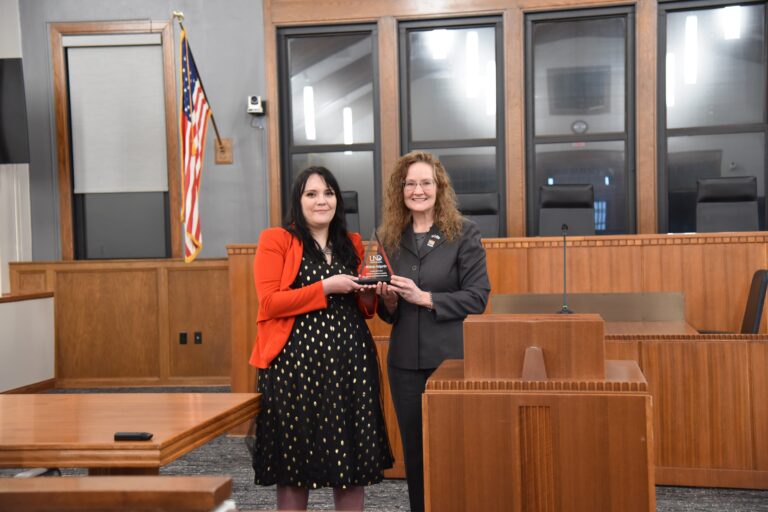Professor Paul Traynor is quoted: Insurance questions, existing pipelines further debate amid CO2 fight in Burleigh County
Efforts to combat climate change have led to a fledgling and unproven industry — storing carbon dioxide emissions in the ground rather than letting them escape into the air, where they contribute to global warming.
Thousands of new miles of CO2 pipeline infrastructure is expected to be built in the U.S. as the country seeks to decarbonize many industries. There is less experience building, operating and living near CO2 lines compared to most other types of pipelines.
One major project in the works is Summit Carbon Solutions’ $4.5 billion Midwest Carbon Express, a 2,000-mile-long pipeline to move CO2 emissions from more than 30 ethanol plants in five states to North Dakota’s Oliver County for permanent storage underground. Summit hopes to be operational in 2024.
The project has sparked opposition from landowners, including many in northern Burleigh County, who have concerns about property values, stymied growth, insurance problems and personal safety. Letters submitted to state regulators from insurance companies, and the presence of other hazardous liquids pipelines in the Bismarck area, have furthered the debate over whether Summit’s pipeline presents a dramatic change from what already exists.
Midwest Carbon Express
Summit is working to secure easements with landowners along the proposed Midwest Carbon Express route through Nebraska, Iowa, South Dakota, Minnesota and North Dakota. The company stated in a recent analysis that it has secured easements for 71% of the proposed route in Emmons, Burleigh and Morton counties.
The proposed route goes just 2 miles outside of Bismarck’s extraterritorial area at its closest point, sparking concerns that it will impede Bismarck’s growth to the north and east, and cause problems for property owners and developers.
Burleigh County has passed ordinances related to hazardous liquids pipelines in response to the Summit debate. Burleigh and Bismarck commissioners, as well as the Bismarck-Mandan Home Builders Association, have called for moving the pipeline, or delaying it until federal regulators craft new rules for CO2 pipelines. A citizen group including two former Bismarck mayors has launched a petition drive to try to pressure elected officials to ensure the pipeline is safe.
Opponents point to a CO2 pipeline rupture that occurred in 2020 near Satartia, Mississippi, resulting in 45 people seeking hospital care.
Summit spokesman Jesse Harris told the Tribune the Satartia rupture occurred because operator Denbury Gulf Coast Pipelines violated regulations — a claim reflected in federal Pipeline and Hazardous Materials Safety Administration documents.
“We are in many respects exceeding PHMSA regulations,” Harris said, including burying the pipeline at least 4 feet deep, when federal regulations call for 3 feet. Some North Dakota opponents have questioned if 4 feet is deep enough to withstand North Dakota’s freeze-and-thaw cycle.
The expansion of CO2 pipelines and the Satartia incident have prompted PHMSA to draft new regulations. The agency is expected to release proposed rules in October 2024, but it’s unknown when they might be implemented.
No fatalities have been reported in relation to CO2 pipelines in the U.S. But experts say there are a number of uncertainties in regards to how CO2 spreads after a pipeline ruptures that don’t exist for other materials often transported by pipeline.
Dispersion questions
CO2 is odorless, colorless and an asphyxiant that displaces oxygen, which can cause breathing problems along with hampering emergency responses because most vehicles require oxygen to run. Many other natural gases also are odorless but have smells added to them so leaks can be detected. There is no commercially available odorant for CO2 pipelines.
CO2 does not burn, but it is heavier than air, and once a rupture occurs it could spread near the ground undetected. There is no standard potential impact radius for a CO2 pipeline leak, according to Kenneth Clarkson, spokesman for the watchdog group Pipeline Safety Trust. Since the dissipation and dispersion of CO2 is dependent on geography, weather and atmospheric conditions, it has the potential to spread to a greater area than other types of gases, he said.
PHMSA requires pipeline companies to identify specific high-consequence areas where a leak could have the greatest impacts. Flaws in the operator’s dispersion study were cited as contributing factors to the damages in Satartia.
Harris said current regulations enable Summit to build and operate a safe CO2 pipeline.
Summit has conducted a dispersion study to determine the potential spread of a leak. The company has submitted it to state regulators at the Public Service Commission but asked that it remain protected, citing security risks. Challengers argue that the dispersion study is public health information and can be separated from details that could be used by bad actors. A PSC hearing to determine if the information will remain protected is set June 27 in the state Capitol’s Pioneer Room.
Existing pipelines
Bismarck’s long-term growth pattern is to the north and east — on a collision course with the pipeline route, and alarming to a number of landowners and developers.


